In the vast pantheon of ancient Egyptian mythology, few deities embody duality as profoundly as Taweret, the hippopotamus goddess. Revered for her fierce protective instincts and nurturing love, Taweret represented childbirth, motherhood, and the sanctity of family. While the hippopotamus was a feared predator in ancient Egypt, its maternal devotion inspired a goddess who continues to captivate us today. From small household shrines to elaborate artifacts, Taweret’s story is one of enduring faith, fierce protection, and timeless love.
Taweret’s Origins and Role in Egyptian Mythology
Taweret’s roots in Egyptian belief date back to the Old Kingdom (c. 2686–2181 B.C.), evolving as personal piety grew during the New Kingdom (c. 1550–1069 B.C.). Depicted as a hybrid creature with the body of a hippopotamus, the tail of a crocodile, and the limbs of a lion, Taweret symbolized a convergence of strength, maternal care, and ferocity.
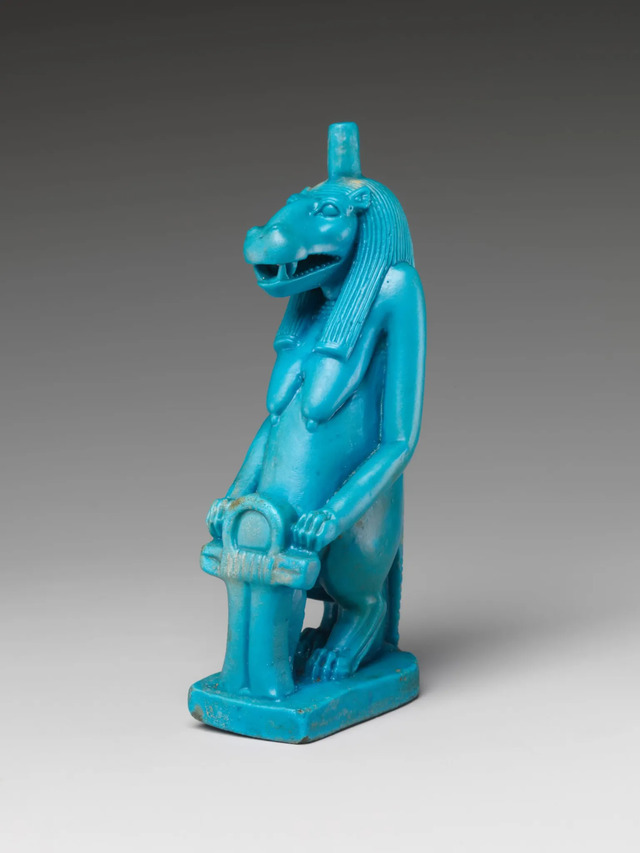
For the Egyptians, the hippopotamus was a paradoxical figure: a creature of immense power and potential danger, yet one that fiercely guarded its young. This duality resonated deeply, leading to Taweret’s role as the protector of pregnant women, newborns, and families. Her image adorned countless household items, offering reassurance and invoking her divine favor in moments of vulnerability.
Video
Explore the messed-up origins of Taweret, the protector of mothers and children, in this Egyptian Gods Explained video – watch to uncover the complex and fascinating mythology behind this powerful deity!
Taweret in Egyptian Art and Archaeology
Artifacts depicting Taweret reveal the goddess’s profound cultural significance. A stunning example is the greywacke statue of Taweret from Luxor, dating back to the 26th Dynasty (664–610 B.C.). This finely carved representation highlights her fierce yet comforting presence. Similarly, the iconic faïence hippo known as “William,” housed at the Met Museum, underscores the Egyptians’ belief in the protective spirit of the hippo. Interestingly, funerary figures like William often had their legs intentionally broken before being placed in tombs—a precaution to prevent these spiritual protectors from becoming ferocious predators in the afterlife.
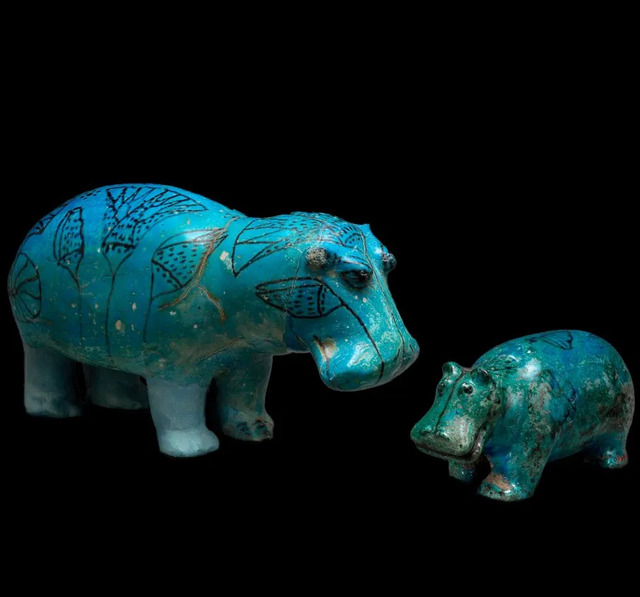
Archaeological finds also include amulets and small figurines, typically made of faïence or clay, depicting Taweret standing on a plinth with her characteristic protective stance. These artifacts were essential items in homes, birthing chambers, and tombs, serving as symbols of safety and divine guardianship.
The Role of Taweret in Daily Life
In the intimate spaces of ancient Egyptian households, Taweret was a constant presence. Families often placed small shrines or figurines of the goddess in their homes, particularly in bedrooms and birthing chambers. These objects, along with offerings of food, beer, and incense, symbolized a plea for protection and gratitude for her blessings.
Magical wands, often crafted from hippopotamus ivory and inscribed with protective deities like Taweret, were another common tool. These wands were used in rituals to ward off evil spirits, especially during childbirth. By drawing protective symbols in the air or on the ground, they invoked the goddess’s protective powers.
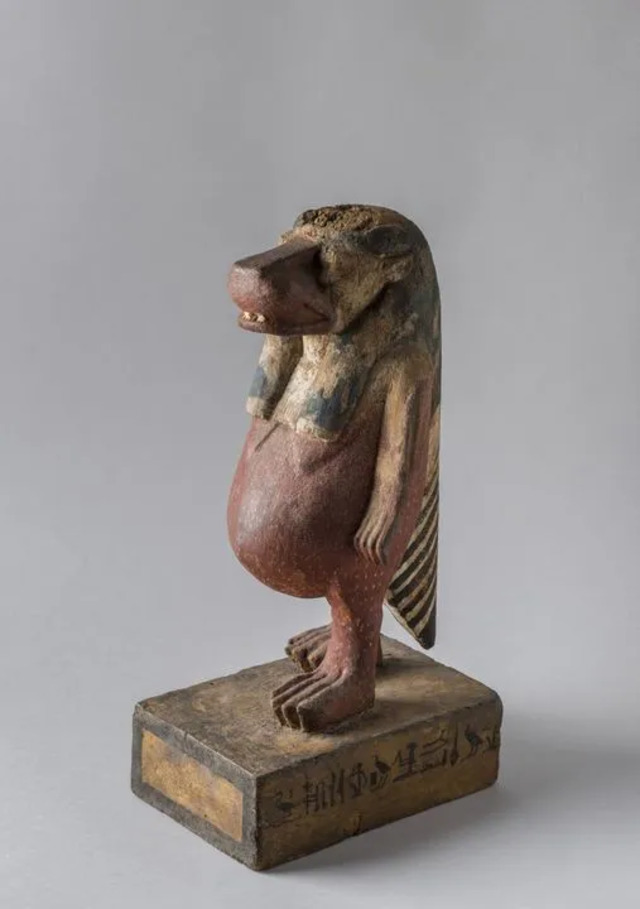
Taweret’s influence extended to practical items as well. Her image adorned cosmetic containers and protective knives, emphasizing her symbolic presence in everyday activities. This integration into daily life highlights how deeply the Egyptians revered Taweret and relied on her divine guardianship.
Rituals and Symbolism Surrounding Taweret
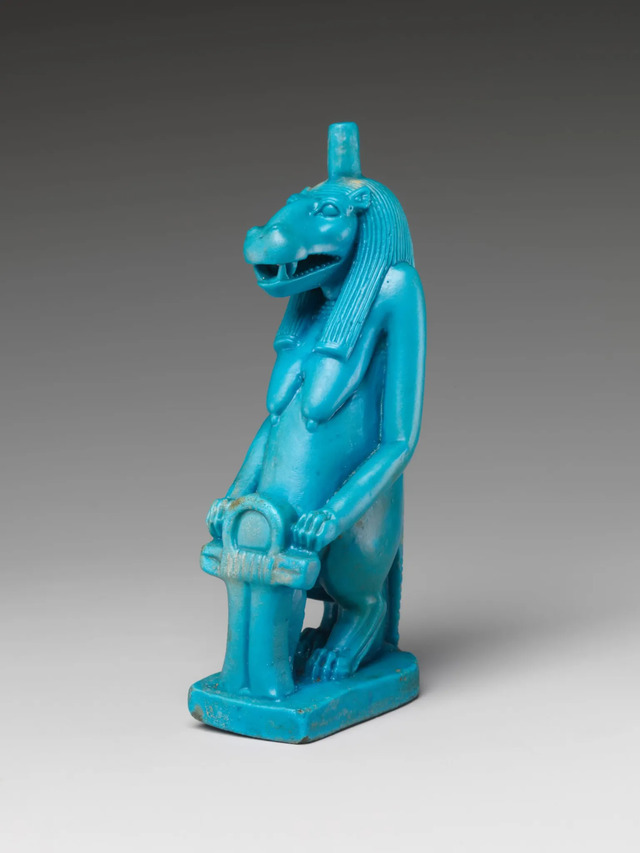
Though few records detail specific festivals dedicated to Taweret, her worship was deeply personal and tied to major life events. During childbirth, Egyptians recited spells and incantations from magical texts like the Coffin Texts and Magical Papyri to invoke her protection. These rituals sought her intervention to ensure the safety of both mother and child, demonstrating her role as a maternal figure of immense power and compassion.
Taweret’s association with fertility and protection likely extended to larger community celebrations, though her worship primarily occurred in domestic settings. Offerings, prayers, and rituals performed in her honor underscored the Egyptians’ belief in her ability to shield families from harm.
The Hippopotamus in Egyptian Myth and Folklore
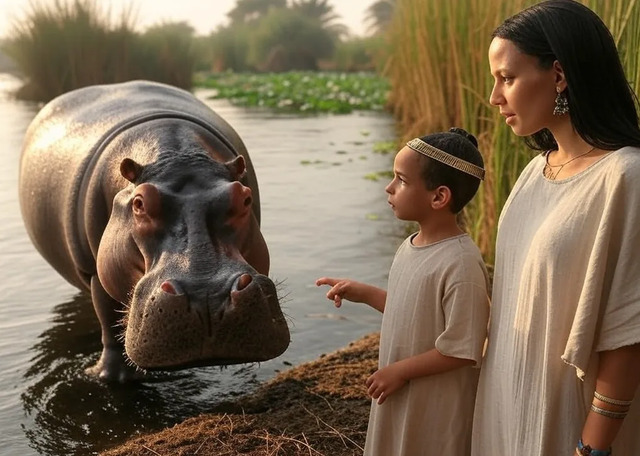
Taweret’s connection to the hippopotamus reflects the Egyptians’ complex relationship with this powerful animal. Hippos were both revered and feared, embodying the forces of nature in their rawest form. A notable tale from Egyptian folklore recounts the story of King Menes, allegedly killed by a hippo during a hunting expedition. While considered mythological, the story illustrates the awe and respect the Egyptians held for these creatures.
Despite their dangerous reputation, hippos inspired admiration for their maternal instincts. This paradoxical view—fear of their might but respect for their devotion—solidified the hippopotamus’s role in Egyptian mythology and Taweret’s identity as a protector.
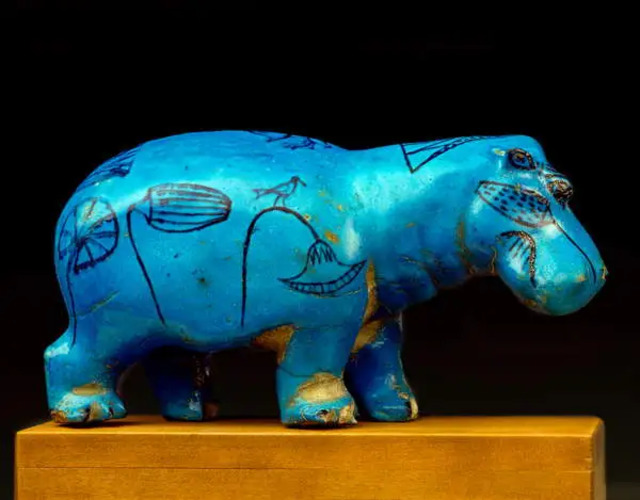
The Enduring Legacy of Taweret
Taweret’s influence extends far beyond the boundaries of ancient Egypt. Today, her story continues to fascinate scholars, artists, and enthusiasts of Egyptian mythology. Iconic artifacts like the greywacke statue and “William the Hippo” are preserved in museums worldwide, offering glimpses into the spiritual life of an ancient civilization.
Modern interpretations of Taweret often focus on her role as a symbol of motherhood and protection, themes that resonate universally across cultures and time. Her mythology reminds us of the enduring human need for guardianship, particularly during life’s most vulnerable moments.
Conclusion: Taweret’s Timeless Guardianship
Taweret stands as a testament to the power of maternal love and the universal desire for protection. In the fierce devotion of the hippopotamus, the Egyptians found a symbol of strength, care, and resilience, encapsulated in a goddess who guarded their families and guided them through life’s challenges.
Her presence, etched into artifacts and echoed in rituals, bridges the ancient and modern worlds. As we marvel at the artifacts she inspired and the myths she shaped, we are reminded of the timeless bond between humanity and the divine—a bond that, through Taweret, celebrates the fierce and loving spirit of guardianship.
